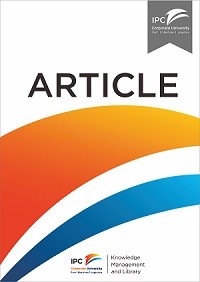Article
New Models for Sustainable Logistics Internalization of External Costs in Inventory Management
Logistics of transport systems is a key driver for the growth of whatever economy. Freight transport allows production systems or common citizens to receive or send materials or finished goods required by processes as well as by everyday life However, the overall transport sector accounts worldwide for more than half of global liquid fossil fuels consumptions which, in turn, is responsible for a nearly quarter of the world’s energy-related CO2 emissions, more than 80 % of air pollution in the cities and about 1.3 million of fatal traffic accidents per year. Negative effects represent ‘external costs’ paid by unaware societies and modern economies.
Costs of externalities account worldwide for more than 10 % of the GDP with an increasing trend. The European Environment Agency (EEA) and the United Nations Environment Programme (UNEP) defined the ‘Avoid-Shift Improve’ (ASI) strategy to tackle the increasing of externalities while EU Commission (Directorate General for Mobility and Transport) established in 2011 a roadmap that will lead to the internalization of external costs within 2020. Research programs and strategic actions on sustainable development of smart cities are focusing on smart mobility of goods and citizens due to the relevant environmental, social and economic costs of logistics. Internalization of cost of externalities gives rise to new logistics cost estimates and functions which managers, researchers, lecturers and students should refer in facing with logistics issues. Under this purpose the present book has been conceived. The book focuses on freight transports of industrial production systems. The most
used keywords are as follows: sustainable logistics, freight transport, internalization of external costs, environmental cost, social cost, inventory management, Economic Order Quantity—EOQ, logistics cost function, loss factor of transport, Sustainable Order Quantity—SOQ, transport means selection, stochastic variability of product demand, stochastic variability of supply lead time, sensitivity analysis, finished vehicle logistics, inland aterways, automotive supply chain, spare parts, repair policy. The book has been subdivided into three main parts, organized as introduced below. v activities. Passenger transport, both public and private, allow people saving time
for their transfers and ensure high level of mobility. Materials and people journeys fulfill economy and society expectations.
Ketersediaan
Informasi Detail
- Judul Seri
-
New Models for Sustainable Logistics
- No. Panggil
-
ATC MG DIG n
- Penerbit
- United States of America : Springer., 2015
- Deskripsi Fisik
-
111P
- Bahasa
-
English
- ISBN/ISSN
-
978-3-319-19710-4
- Klasifikasi
-
MG
- Tipe Isi
-
-
- Tipe Media
-
-
- Tipe Pembawa
-
online resource
- Edisi
-
2015
- Subjek
- Info Detail Spesifik
-
-
- Pernyataan Tanggungjawab
-
Salvatore Digiesi
Versi lain/terkait
Lampiran Berkas
Komentar
Anda harus masuk sebelum memberikan komentar

 Karya Umum
Karya Umum  Filsafat
Filsafat  Agama
Agama  Ilmu-ilmu Sosial
Ilmu-ilmu Sosial  Bahasa
Bahasa  Ilmu-ilmu Murni
Ilmu-ilmu Murni  Ilmu-ilmu Terapan
Ilmu-ilmu Terapan  Kesenian, Hiburan, dan Olahraga
Kesenian, Hiburan, dan Olahraga  Kesusastraan
Kesusastraan  Geografi dan Sejarah
Geografi dan Sejarah